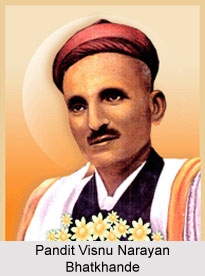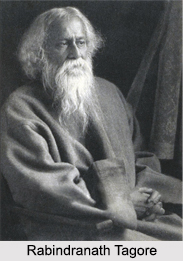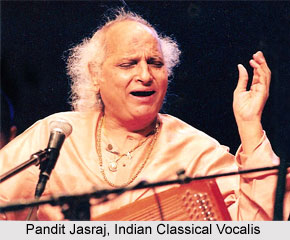 Hindustani classical music in modern India holds a distinct position in the cultural arena of northern India. Indian music has been simultaneously nurtured in two zones which have rendered distinguishing characteristics to it. Northern zone of the country from Srinagar to Belgaon and Dwaraka to Manipur has a different flavour whereas the music in southern zone including Kerala, Karnataka, Tamil Nadu and Andhra Pradesh has altogether different features. Both these streams developed as parallels and have enriched the musical heritage of country by lending it a variety of attributes and enchanting features.
Hindustani classical music in modern India holds a distinct position in the cultural arena of northern India. Indian music has been simultaneously nurtured in two zones which have rendered distinguishing characteristics to it. Northern zone of the country from Srinagar to Belgaon and Dwaraka to Manipur has a different flavour whereas the music in southern zone including Kerala, Karnataka, Tamil Nadu and Andhra Pradesh has altogether different features. Both these streams developed as parallels and have enriched the musical heritage of country by lending it a variety of attributes and enchanting features.
The form of Indian classical music prevalent in north is known as Hindustani classical music. It has contributed much in the cultural growth of India. Its origin is enrooted in ancient past in the times of the Gandharva-Sangita and the Sama Gana. The course of development of Hindustani classical music has passed a number of phases and has witnessed social as well as political upheavals. In today`s world this form of music has a distinct identity and its present form is the consequence of cultural evolution in India.
 Hindustani Classical Music in British Era
Hindustani Classical Music in British Era
Hindustani classical music has been greatly affected by political and social events that the country has witnessed since ages. British Empire in India had a profound impact on the culture of India and the period had greatly motivated the reformists. Foreign influences have also played crucial role on Indian music and the values that boosted its growth have been imbibed by it. Socio cultural scenario of the country underwent a huge transformation owing to the thought process brought by the British. On one hand as it had caused a devaluation of traditional concepts, on the other it has also led to the revaluation of the set norms and practices. This music has always fought its way to find a place that represents the pride of Indian culture.
During the long British rule of nearly 200 years Indian music was immensely neglected. No recognition was provided to it as a form of education or to develop it as a significant aspect of Indian culture. However, Indians have always felt a deep affection for Indian music and have extended their patronage and appreciation. They have accepted it as an integral part of their culture as well as an important component of amusement. A number of musicians in that era who had taken up music as their profession took pride in it and made efforts to popularize it by imparting training to the aspirants. This has played a key role in preserving this precious form of art and also helped in changing the outlook of people. The legacy of Indian classical music has been transferred from generation to generation and in many cases emerged as a family profession and an important part of social customs.
Hindustani Classical Music during Indian Freedom Struggle
When the struggle for independence began in the country, people became highly aware of this tradition which has succeeded in maintaining its prominence through ages. A number of rulers during this period also patronized this art by summoning great musicians to their royal courts. The performances of eminent artists had greatly highlighted and popularized Indian music and helped it in spreading among the common men as well. Numerous attempts were made to develop a strong bond between the people and the music which comprised inclusion of music in the format of general education and establishment of various musical institutions. These attempts helped a great deal to revive the popularity of music and much of this credit must be given to Pandit Visnu Digambar Paluskar (1872-1931) and Pandit Visnu Narayan Bhatkhande (1860-1936). In the year 1857, that was the year of Indian Sepoy Mutiny, a new wave of modern Indian music started. Some of the greatest music maestros emerged in the beginning of twentieth century. Their soulful renditions have made permanents imprints in the musical world which still serve as inspirations for the critics and musicians of present world.
 Variations of Hindustani Classical Music
Variations of Hindustani Classical Music
The works of Indian poet and Nobel laureate Rabindranath Tagore had cast a great impact on Hindustani classical music. Being greatly influenced by the classical form of music he had numerous compositions which reflected this art form and had also reached beyond this by composing songs of folk genre including Bhatiali and Baul Songs. Aesthetic aspects of classical music have immensely inspired his compositions and his songs were reflections of different raags. Although he was not much concerned with the formal structural aspects, he still exploited them to the fullest in his compositions. His songs also reflected experimentations with different ragas. Tagore`s compositions were tremendously inspired from the contemporary maestros of classical music such as Jadu Bhatt and many Ustaads. This trend was also followed by many other poets and composers of modern world and they have also derived inspirations from variations of classical music.
In contemporary times, although Hindustani classical music has imbibed a number of influences in course of its development, it has maintained its aesthetic structure and aura along with which it originated. However many a times, in parts or in full, it has experienced modifications suiting to the artistic capabilities of the performer but it has never deviated from casting the same appeal as its crude form. Variations have developed in its form through ages and many styles of Hindustani classical music evolved including Tappa, Thumri, Khayal, Dhamar and Dhrupad which have added to the versatility of this art, keeping its ancient inheritance intact.
In the modern world, the influence of western countries has greatly dominated the socio cultural scenario of the country. Different form of music has been greatly moulded by this influence but Indian classical music always remained unaffected by it. However a little impact has been traced which includes experimentation with ragas, incorporation of European instruments in classical music and many more. Thus Hindustani classical music has maintained the rich tradition of India over years.




















